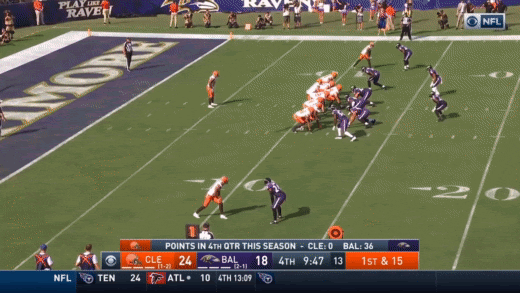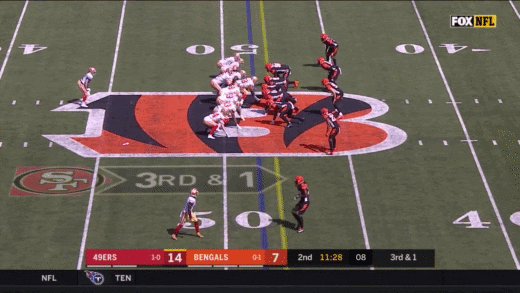
www.vizualedge.com • Press Release – updated: Jan 11, 2021
The importance of running backs in the National Football League (NFL) has become a hot topic across football throughout the years. Do you invest a high draft pick and long-term security into an RB? It’s a position where athletes take a lot of hits and are considered to have a short shelf-life. If you do choose to invest in an RB, what are some of the most important skills he must have? Speed, elusiveness, agility, and strength all come to mind when looking for an RB. One of the skills that gets overlooked in those transition years (from high school to college & from college to the pros) is vision. Not vision in the traditional sense of 20/20 vision, but how an athlete processes what he sees on the football field.
Size, power, speed, and elusiveness are often easy to quantify in today’s football world, but vision often is subjective. When I speak on vision for an RB, I think about the following skills/traits:
- Timing
- Reading Leverage
- Recognition
These skills/traits are essential for an RB to succeed at the next level. Your physical skills can bring you to the next level, but your visual skills will help you sustain extended success at the next level.
There have been countless examples of RB’s under-performing or flaming out of the league too early, not due to their physical skills, but due to their vision and ability to process the information on what they’re seeing in real-time.

Here is an example where Leonard Fournette does not rely on his vision to pick an open hole. Instead, he keys in on a point of attack and just runs into a minimal gain. Here is a great opportunity to see what is happening in front of you and recognize you need to adjust in real-time.
Timing
“Slow to the hole, and fast through,” all RB coaches preach this in film sessions around the country. This is all about timing and letting your play develop. As a former offensive lineman, sometimes it takes a little bit to get the big hog mollies in the right position. Allowing the play to develop before you, will give your blockers time to best position themselves to open up running lanes.
On the other hand, if you’re running full speed before the play develops you’ll have trouble changing course when necessary. This often results in those short runs into a jammed up line of scrimmage. Having the proper timing will allow the play to develop and the RB will be able to see lanes as they open.

This play is a great example of great timing by Nick Chubb. Chubb paces himself behind the line of scrimmage, allowing his blockers time to get their blocks on this outside counter play. As soon as his blockers engage, Chubb sees the line and accelerates through the hole.
Reading Leverage
Arguably the most telling of “true vision,” reading leverage is a critical skill for all RB’s to have. Each team has its unique styles, whether it comes from a blocking scheme, offensive philosophy, or play-calling, but the ability to read leverage as an RB will take a 1-yard run and turn it into a 7 yard gain. In zone blocking schemes there is no defined point of attack for an RB. An RB must quickly assess the leverage of blocks from the front side to the back side in order to find the best hole.

Here you see Matt Breida on a zone run to the left. As he approaches the line of scrimmage, he quickly assesses that there is no leverage there. He then reads that the defenders are washing down the left and has an opportunity to attack against the grain going right. This is a great example of an RB reading leverage to create something out of nothing.
Recognition
As an RB, your recognition skills are being used at all times. Being able to recognize defensive tendencies, individual defensive players, reading leverage, and recognizing opportunities to gain additional yardage is all part of the recognition skills that go into every single play. Recognizing a certain defensive formation, blitz, or stunt will put you in a position to counter the defense.
How do you balance all this visual information on the field in real-time? One, your film-study is invaluable as it allows you to recognize different defensive tendencies by teams and individuals, as well as your own team and blockers. Film study is at the basis of it all, but how do you physically recognize and react when it comes time? Mental performance and vision training tools, like Vizual Edge, allow athletes to train the mental and visual skills needed to help retain what they study and see in film sessions.
Utilizing Vizual Edge in Football improves athletes’ abilities to recognize, see, and respond to their opponents, tendencies, and blockers on the field. 80% of sensory information stems from your vision, so strengthening your vision will strengthen your abilities on the football field.
– Zack
Follow Zack on Twitter @Z_Strock_51
Follow Vizual Edge on Twitter @VizualEdge
